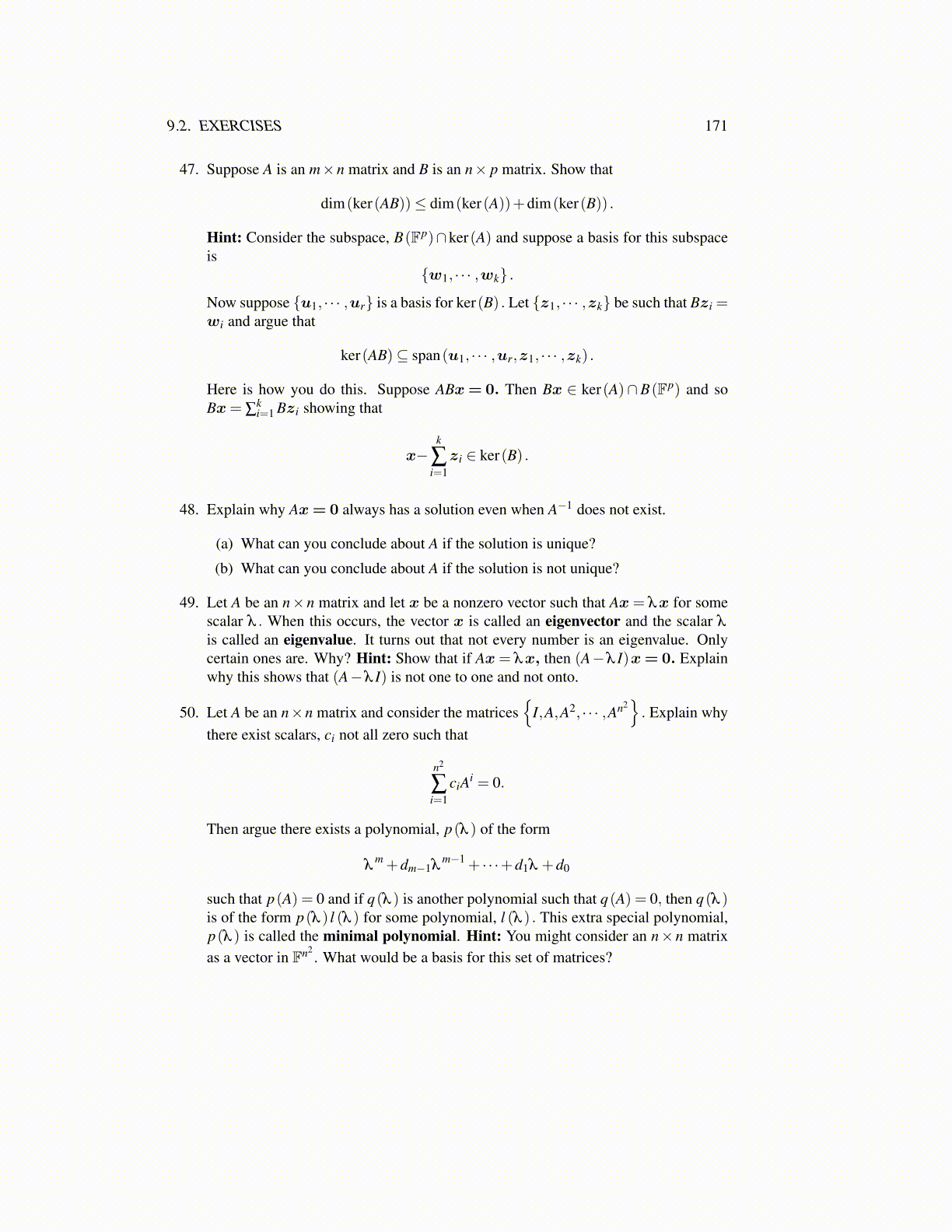
9.2. EXERCISES 171
47. Suppose A is an m×n matrix and B is an n× p matrix. Show that
dim(ker(AB))≤ dim(ker(A))+dim(ker(B)) .
Hint: Consider the subspace, B(Fp)∩ker(A) and suppose a basis for this subspaceis
{w1, · · · ,wk} .
Now suppose {u1, · · · ,ur} is a basis for ker(B) . Let {z1, · · · ,zk} be such that Bzi =wi and argue that
ker(AB)⊆ span(u1, · · · ,ur,z1, · · · ,zk) .
Here is how you do this. Suppose ABx= 0. Then Bx ∈ ker(A)∩B(Fp) and soBx= ∑
ki=1 Bzi showing that
x−k
∑i=1
zi ∈ ker(B) .
48. Explain why Ax= 0 always has a solution even when A−1 does not exist.
(a) What can you conclude about A if the solution is unique?
(b) What can you conclude about A if the solution is not unique?
49. Let A be an n×n matrix and let x be a nonzero vector such that Ax= λx for somescalar λ . When this occurs, the vector x is called an eigenvector and the scalar λ
is called an eigenvalue. It turns out that not every number is an eigenvalue. Onlycertain ones are. Why? Hint: Show that if Ax= λx, then (A−λ I)x= 0. Explainwhy this shows that (A−λ I) is not one to one and not onto.
50. Let A be an n×n matrix and consider the matrices{
I,A,A2, · · · ,An2}. Explain why
there exist scalars, ci not all zero such that
n2
∑i=1
ciAi = 0.
Then argue there exists a polynomial, p(λ ) of the form
λm +dm−1λ
m−1 + · · ·+d1λ +d0
such that p(A) = 0 and if q(λ ) is another polynomial such that q(A) = 0, then q(λ )is of the form p(λ ) l (λ ) for some polynomial, l (λ ) . This extra special polynomial,p(λ ) is called the minimal polynomial. Hint: You might consider an n×n matrixas a vector in Fn2
. What would be a basis for this set of matrices?